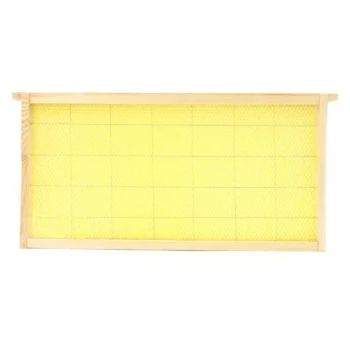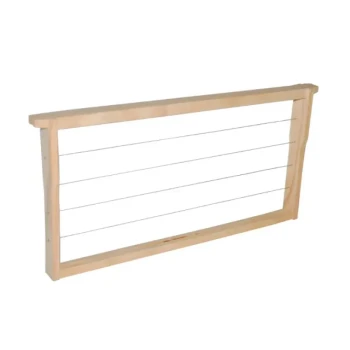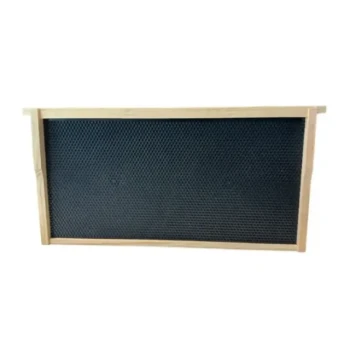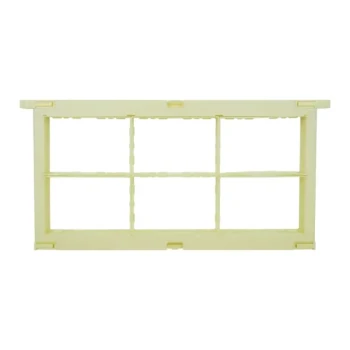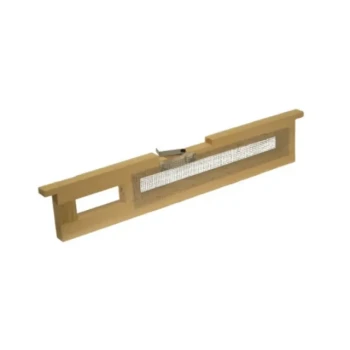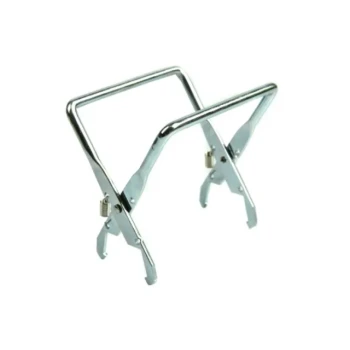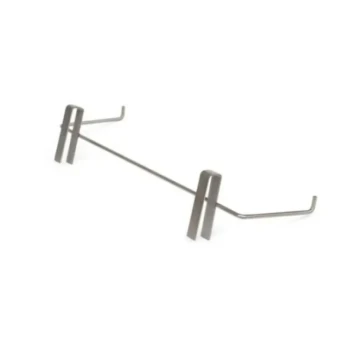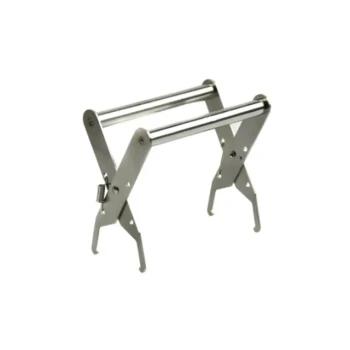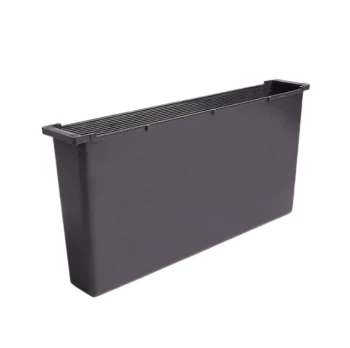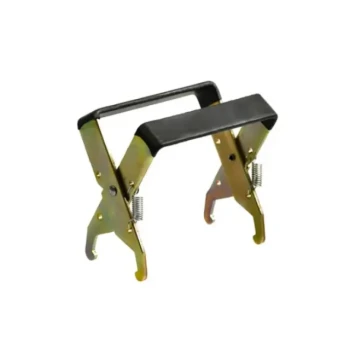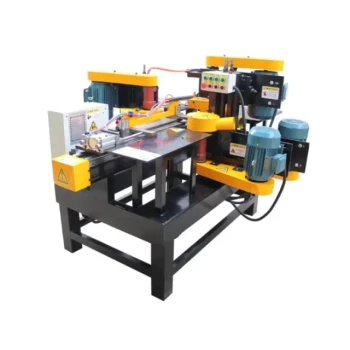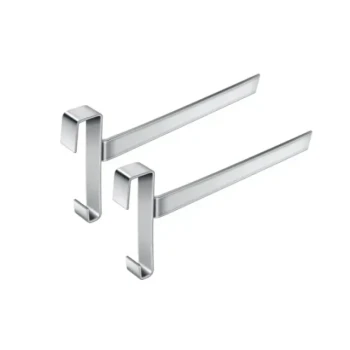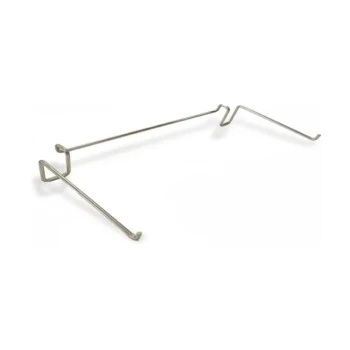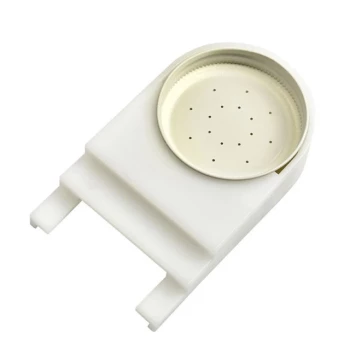On average, a single beehive frame can yield between 3 to 6 pounds of harvestable honey. The exact amount depends almost entirely on the size of the frame you are using. Standard Langstroth deep frames yield the most at about 6 pounds, followed by medium frames at around 4 pounds, and shallow frames at approximately 3 pounds.
While frame size sets the maximum potential, your actual honey yield is a direct reflection of your colony's health and the abundance of nectar in your environment. Viewing these numbers as reliable estimates rather than fixed guarantees is crucial for successful hive management.
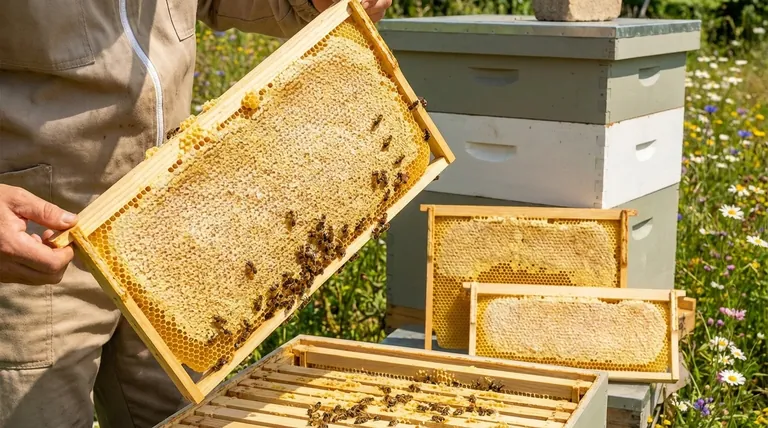
The Primary Factor: Frame Size
The physical volume of the frame is the most straightforward variable in determining your honey yield. Beekeepers typically work with three standard Langstroth frame sizes, each with a different capacity.
Deep Frames (9 1/8 inches)
These are the largest standard frames, most often used in the lower hive bodies for the queen to lay eggs (the brood chamber). When used for honey, a single deep frame can hold approximately 6 pounds of honey.
Medium Frames (6 1/4 inches)
Often called "honey supers," medium frames are the most popular choice for honey collection. They are significantly lighter and easier to handle than deeps when full. A medium frame will yield around 4 pounds of honey.
Shallow Frames (5 3/8 inches)
As the smallest and lightest option, shallow frames are the easiest to lift. A fully capped shallow frame will provide about 3 pounds of honey.
Beyond Size: What Influences Your Actual Yield?
Simply placing a frame in a hive does not guarantee a specific amount of honey. Several other critical factors are at play, which is why yields can vary so much between seasons and even between hives in the same apiary.
Is the Frame Fully Capped?
The estimates above assume the frame is "fully capped," meaning the bees have filled the comb with honey and sealed each cell with a layer of beeswax. A frame that is only partially filled or uncapped will yield significantly less.
The Strength of Your Colony
A large, thriving colony with a robust population of forager bees will collect nectar and produce honey far more quickly than a small or weak colony. Hive health is a direct precursor to honey production.
The Availability of Nectar
Bees cannot make honey without raw materials. The amount of honey produced is directly tied to the "nectar flow"—the period when local flowers are blooming and producing abundant nectar. This is influenced by season, rainfall, and local geography.
Understanding the Trade-offs
You might assume that using only deep frames is the best way to maximize your harvest, but there is a significant trade-off to consider.
The Weight Factor
A deep hive body (a "super") filled with ten deep frames of honey can weigh 80 pounds or more. In contrast, a medium super typically weighs a more manageable 40-50 pounds. This weight difference is a major practical consideration for the beekeeper.
Brood vs. Honey
The standard practice is to use large, deep frames for the brood chamber at the bottom of the hive and place lighter medium or shallow supers on top for honey collection. This separation, often aided by a queen excluder, ensures you are harvesting pure honey and not disturbing the area where new bees are being raised.
Making the Right Choice for Your Goal
Your equipment choices should align with your beekeeping goals and physical capabilities.
- If your primary focus is maximizing yield per frame: Using deep frames for honey will give you the most honey per frame, but be prepared for extremely heavy lifting.
- If your primary focus is manageable weight and ease of use: Medium frames offer the best balance of good yield and manageable weight, making them the most common choice for honey supers.
- If your primary focus is the absolute lightest equipment: Shallow frames are the easiest to handle and are an excellent choice if lifting is a concern.
Ultimately, understanding these variables empowers you to manage your hives and expectations effectively.
Summary Table:
| Frame Type | Depth | Approx. Honey Yield |
|---|---|---|
| Deep Frame | 9 1/8" | 6 lbs |
| Medium Frame | 6 1/4" | 4 lbs |
| Shallow Frame | 5 3/8" | 3 lbs |
Ready to optimize your honey production? As a trusted supplier for commercial apiaries and distributors, HONESTBEE provides the durable, high-quality beekeeping equipment you need to maximize your yield. From deep frames for maximum harvest to lightweight medium supers for easier handling, we have the right tools for your operation. Contact our experts today to discuss your wholesale needs and boost your beekeeping efficiency!
Visual Guide
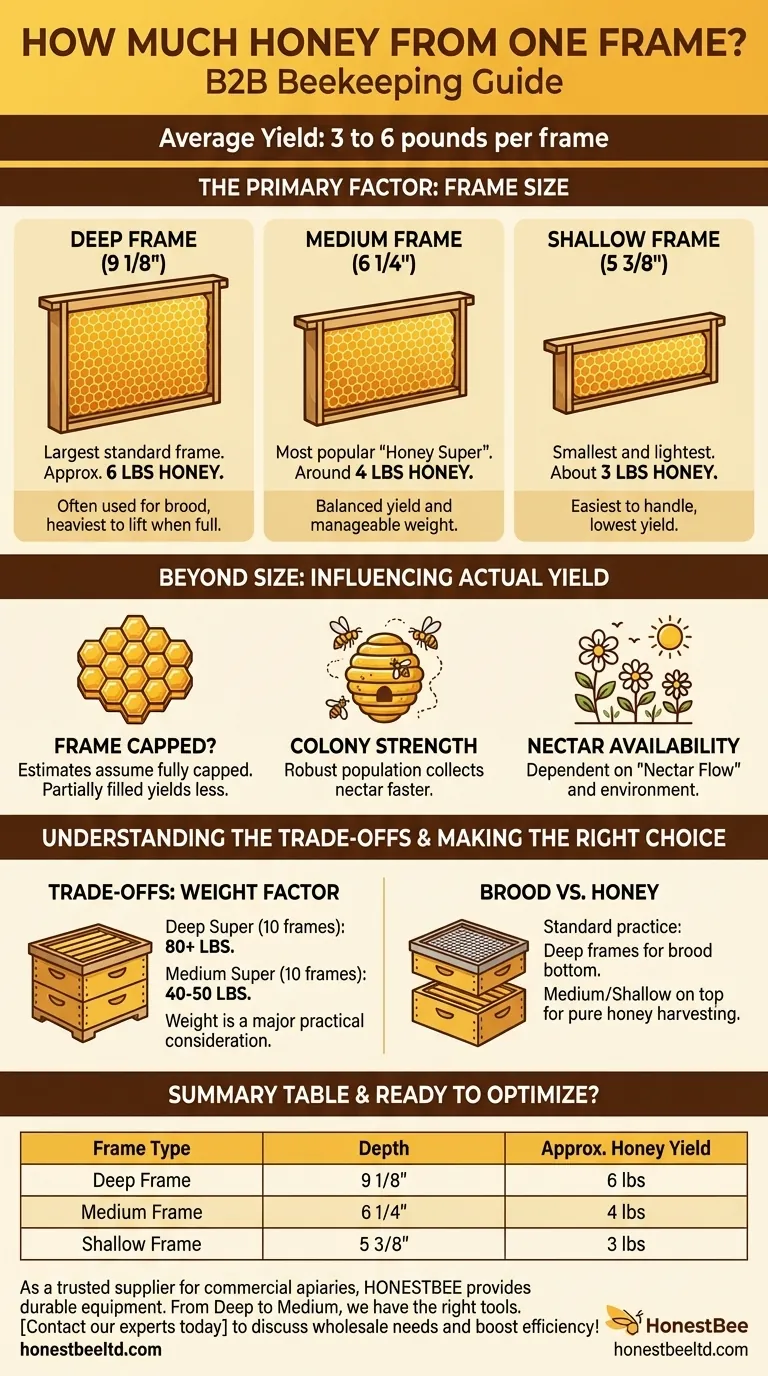
Related Products
- Assembled Wooden Bee Frames with Beeswax Foundation Ready to Use by HONESTBEE
- HONESTBEE Wired and Assembled Wooden Bee Frames Foundation for a Thriving Hive
- Assembled Wooden Bee Frames with Plastic Foundation for Durability and Convenience by HONESTBEE
- Professional 500g Sectional Comb Honey Frame System for Beekeeping
- Heart-Shaped Comb Honey Frame and Honeycomb Cassette
People Also Ask
- How many frames fit in a 10 frame hive? A Guide to Maximizing Your Hive's Potential
- What are the main parts of a hive frame? A Guide to Modern Hive Anatomy
- Can I reuse old frames? A practical guide to saving money and reducing waste
- What are some tips for setting up hive frames? Build a Strong Foundation for Your Hive
- How are Langstroth beehive frames assembled? A Step-by-Step Guide for a Durable Hive
